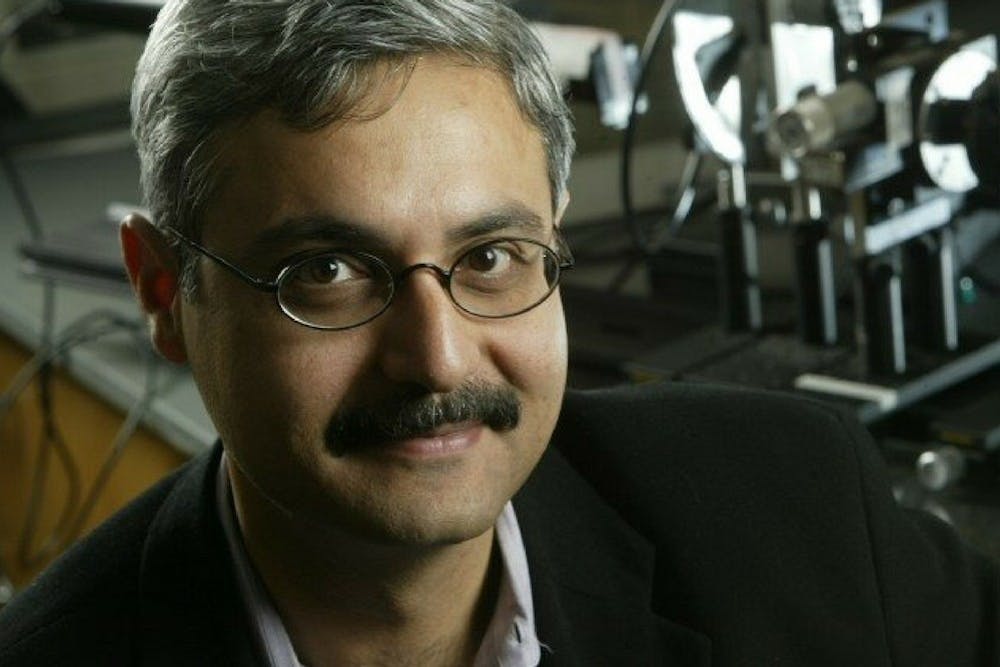Two Pratt professors are leaders of a four-year, $1.4 million project to explore the realm of soft materials.
The project—a collaboration between the Pratt School of Engineering and the Washington University in St. Louis—brings together materials science, biomedical engineering and statistical modeling in an interdisciplinary hunt for the perfect man-made biopolymer. The scientists' goal is to create a self-assembling biopolymer capable of “phase behavior,” in which the biopolymer’s solubility switches depending on the temperature of the solvent surrounding it. The team is only limited scientifically by the near-infinite number of combinations of the 20 amino acids that nature offers.
“We know that there are some sequences that exist in nature that do this,” said Ashutosh Chilkoti, Alan L. Kaganov professor of biomedical engineering and member of the research team. “The question is, are these the only ones? And if there are more, what would they look like?”
Late last year, the National Science Foundation sent out a call for proposals for such a project through a special initiative called Designing Materials to Revolutionize and Engineer our Future. The work that Chilkoti—also chair of the biomedical engineering department—and his colleagues had been doing leading up to the call fit the bill perfectly.
“This call was almost written for us,” Chilkoti said. “We’d been working together for years on this kind of materials research. We sat on our couches for 14 days and wrote nonstop to get the grant.”
Soft materials are not necessarily biological. In fact, any non-crystalline substance qualifies, explained Stefan Zauscher, Sternberg Family professor of mechanical engineering and materials science and another collaborator on the project. Some examples include silicone gels, foams and soft tissues in the body.
The advantage of a biopolymer over a synthetic polymer is the preciseness with which the researchers can specify its amino acid sequence. Once the investigators strike upon an exact sequence for a stimulus-responsive, self-aggregating peptide, they can effectively trick E. coli cells into producing the peptide for them.
“We’re capitalizing on all the enormous proofreading machinery of the central dogma—replication, transcription, translation—to make a peptide instead of a protein,” Chilkoti said.
Zauscher’s interest is in the macroscopic structures he can build from the basic repeating unit of this biopolymer, like a self-assembling membrane. The trick is encoding this property of self-assembly—the ability for these molecules to autonomously find each other and grow into larger structures—into the peptide.
“We have empirical or semi-empirical ways of figuring out what might be useful sequences,” Zauscher said. “[Chilkoti] would have to do it with labor. But [our collaborator] can model it before we even start to make a material culture.”
Collaborating on this project is Rohit Pappu, Edwin H. Murty professor of engineering and director of the Center for Biological Systems Engineering at the Washington University in St. Louis. His role will be to simulate different peptide sequences and predict their behavior.
“He can take all the data we have and build, for example, a machine learning algorithm that will spit out candidate materials that we can test,” Chilkoti said.
Soft materials in the body are often associated with a solvent that regulates their properties. Thus, a polymer whose properties change depending on the temperature of its solvent could prove useful in a wide range of applications. Chilkoti cited new methods of drug delivery, scaffold for tissue engineering and purification of proteins without chromatography as just a few.
Chilkoti and Zauscher said they are fortunate to have won such a competitive grant. Both are pursuing this project alongside their existing research.
Get The Chronicle straight to your inbox
Signup for our weekly newsletter. Cancel at any time.

